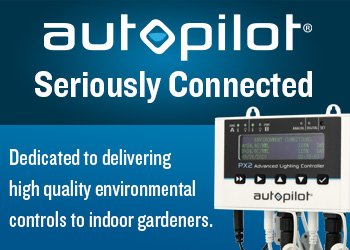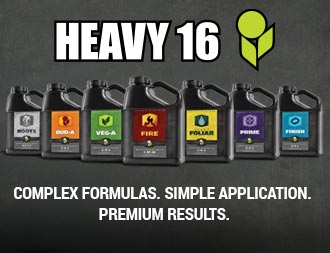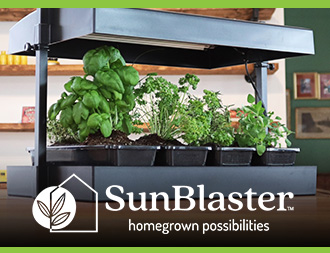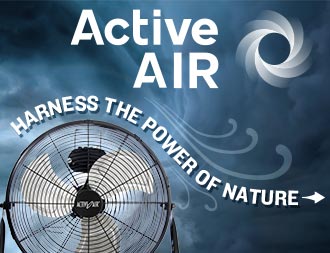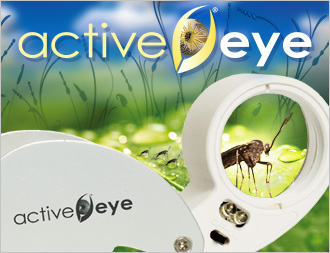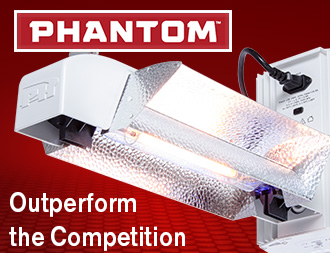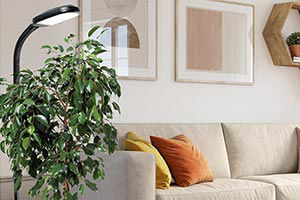Light is the all-important source of energy used by plants in photosynthesis. But light is not just one simple, well-defined entity. The plant response is influenced by light quality, intensity and duration.
The energy contained in light is absorbed in the chlorophyll of plants. Not all wavelengths of light are utilized with equal efficiency. Looking at a chlorophyll/light absorption curve, one can deduce that red and blue light are more effective than green. This is logical. Plants do not use all of the green light. They reflect it. This is why plants appear green.
When electric light sources produce light, the wavelength (color) is determined by many things. For instance, a tungsten filament in an incandescent bulb emits more light with long wavelengths (the reds) when it is relatively cool and more short wavelengths (the blues) when it is very hot.
Other sources emit light in special ways. Metallic vapor lamps are quite efficient for high intensity lighting on larger areas. Fluorescent tubes are the most economical and convenient in limited areas. In the fluorescent tube, special phosphors become excited as electricity is supplied to them and give off energy in certain wavelengths. It is possible to design these tubes to emit primarily red, green, yellow or the "color" of your choice. Not all are equally efficient, but this would appear to have a practical application, since plants do not use all wavelengths with equal efficiency.
To achieve better efficiency in the response of plants to fluorescent light, special tubes have been designed which emit proportionately more blue and red wavelengths of light. In doing so, the green-yellow-orange fraction has been reduced. The loss in this portion of the spectrum, even though it is slightly efficient has not been compensated by enough increase in the blue-red portion of the spectrum to result in increased plant growth.
Critical experiments show that maximum growth of most plants under cool white fluorescent lights will be equivalent to or better than that obtained under the blue-red phosphors. Work by V. A. Helson, Canada Department of Agriculture, Ottawa; and J. W. Bartok and R. A. Ashley, University of Connecticut, indicate that there is no advantage to the use of blue-red fluorescent tubes except for aesthetic purposes. Some of the names of these special tubes are Grolux, Plant-Gro, Plant Light, Vita Light and Optima. The higher cost of these fluorescent tubes may be justified on experimental or aesthetic grounds but is hardly warranted on the basis of plant growth.
Intensity also affects the growth of plants. The brighter the light, the more energy the plant receives. To determine how much light a plant will require, consider where and how it grows best in its natural environment. Most vegetable and many mature flowering plants that grow in full sunlight need a high light intensity of 25 to 30 lamp watts per square foot. (A standard fluorescent tube provides 10 lamp watts per foot of length, so 40W, 4-foot fluorescent tubes a foot apart will supply 10 lamp watts per square foot.) The lamps should be located 8 to 12 inches above the plants and will provide about 800 foot-candles when placed on 12" centers. (The foot-candle is the illumination level or the amount of light falling on a surface).
Mature leafy house plants and growing seedlings will do well with 15 to 20 watts per square foot. Ten to 15 watts per square foot will be sufficient for germinating seeds (when required). This is considered low-intensity for plants but high-intensity for home or office lighting, which may be only 1 to 2 1/2 lamp watts per square foot.
Many plants are photoperiodic. That is, they actually measure the length of each night and then produce either flowers or vegetative growth on the basis of this information. This response places them in groups as long night, short night or indeterminate plants.
Long night plants need 11 to 14 hours or more of darkness per night to flower. Chrysanthemums and poinsettias are good examples of this. Short night plants generally require less than 10 hours of darkness to flower. Dahlias, nasturtiums and many annuals are examples. Indeterminate plants will flower at all seasons of the year without regard to photoperiod but usually require 12 to 18 hours of light for good growth. Although many plants will grow under continuous light, almost all plants prefer a dark period each day for best growth.
In summary, fluorescent lights are efficient sources of light for growing plants in specific locations or situations. Blue-red fluorescent tubes may elicit an adequate response from some crops, but cool white light is as, or more efficient for most crops. For several crops requiring especially high light intensities, the high energy discharge multi-vapor lamps should be investigated as well as high output and very high output fluorescent tubes.
Reprinted by permission.

